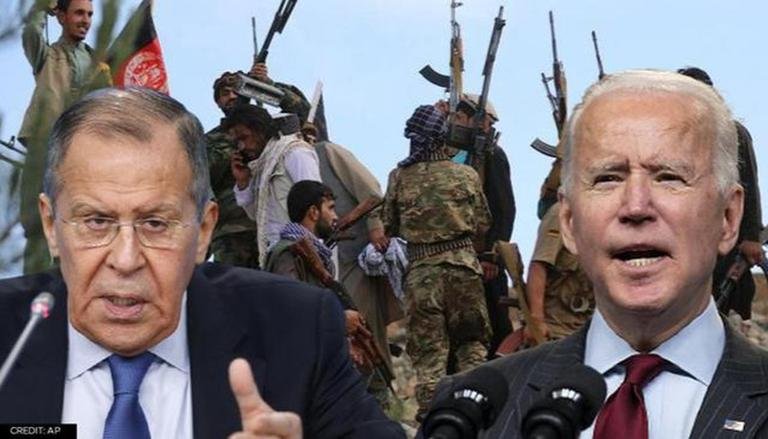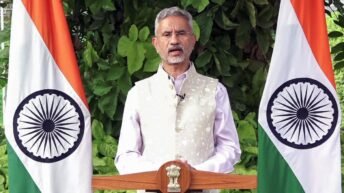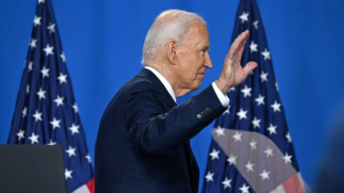|
Listen to article
Getting your Trinity Audio player ready...
|

The Minister of External Affairs, S Jaishankar rightly restated that India wanted peace in and around Afghanistan. As the Taliban are bringing more towns and border crossing points under their control the neighbouring states, Pakistan, Tajikistan, Uzbekistan, India, China and Russia, all are closely watching how the situation is developing in strife-torn Afghanistan after the exit of the US and NATO forces.
Washington argues that the purpose of their occupation was to destroy Al Qaeda that had hatched the 9/11 conspiracy. It added that the Afghan Taliban had forged a nexus with Al Qaeda once Osama bin Laden managed to find a haven in the Af-Pak region. The Pentagon claimed that since Osama had been eliminated along with many other commanders of the organization, it did not envision any threat from the Taliban because the organization was badly battered and enfeebled during two decades of fighting.
Nevertheless, the contentious decision of withdrawing almost unconditionally from two-decade-long fighting against the Taliban without having broken their backbone has raised many an eyebrow. There were voices of opposition even among some Congressmen as well.
The only attempt at face-saving, which the US made, was to engage the Taliban for talks that would lead to make them promise safe passage to the withdrawing American and NATO troops. Pakistan used its clout with the Taliban and managed to bring them to a peace dialogue in Doha in January 2020. Until that time, the US sources had been using its influence, not too successfully, because the Taliban had taken the position that peace talks would be held only when foreign troops vacated Afghanistan and Taliban POWs had been unconditionally released.
Peace talks were held between the US and Taliban leadership and not with the representatives of the elected government in Kabul, which the Taliban have always declined to recognize. It is a different matter that President Ashraf Ghani’s government representative was present in the Doha meeting, more as an observer, where the peace agreement between US government and the Taliban leadership was signed. The agreement did carry a clause purporting that once a ceasefire was implemented, the Afghan stakeholders would sit down and discuss the future course of action in intra-Afghan talks.
The ink on the Doha agreement had hardly dried up when the Taliban launched a massive attack on government forces in the eastern province of Kunduz in which nearly two dozen soldiers were killed. The Taliban escalated the violence and began making successful advances, capturing more territories and border crossing points. The Taliban demanded that the Kabul regime should set free thousands of their taken prisoner by the Kabul government. The process of releasing a large number of prisoners was not that simple because of the nature and content of criminal charges against them.
During the exit of the American and NATO troops, the Taliban escalated the fighting. They began capturing more district towns and crossing points of strategic importance and claiming that eighty five per cent of the territory had come under their control. Their gains on the ground include Northern Afghanistan bordering the Central Asian Republic of Tajikistan — once called the underbelly of the erstwhile Soviet Union. Moscow took cognizance of the seriousness of the situation and the implications of Taliban capture of the Badakhshan-Pamir watershed. It was evident that in case of capturing power, the Taliban would resort to the enforcement of strict sharia law that deprives the Afghan women of all freedoms under human and civil rights including denial of education to the female children.
Moscow is concerned about the vulnerability of the southern border of the Republic of Tajikistan with Afghanistan. A situation similar to the one in 1996 could be repeated with very serious consequences for the fragile cohesion of Tajik society. After all, it was with great difficulty that the Tajik government under President Emomali Rahman had been able to restore normalcy in the republic that had seen six years of brutal civil war.
The reports are that the Kabul regime is seriously working on the plan of raising a special force of Afghan nationalist youth — something like conscription — for which the US may offer adequate financial assistance. We know that the US is desperately asking Pakistan for military bases from where her defence forces can operate against the Taliban if the need arises. However, Pakistan is mired in deep internal conflicts as the Pak military seniors have been discussing the subject with counterparts in the Pentagon but the Islamabad civilian leadership is shying away apprehending violent reactions from the home-bred terrorist-fundamentalist outfits. At the same time, there are some unconfirmed reports that during his meeting with Biden in Geneva, Putin agreed to give a military basis to the US for military operations against the terrorists, including the Taliban although that has been denied by unofficial Russian sources. Tajikistan and Uzbekistan both are likely to go by the advice of President Putin. If the US succeeds in acquiring a military base in Central Asia close to Afghanistan, she may reinforce it with support from the naval presence in the Gulf region.
A corollary to this strategy aimed at containing the Taliban is the counter-strategy of Beijing which invited a delegation of nine Taliban under the leadership of Mullah Baradar for talks in Beijing. China has two purposes. One is to be on the side of the Taliban so that in the event of the Taliban takeover of Kabul, China may strike a mega economic deal with them. The second aim is to strengthen Beijing’s sway now poised against the western type of democracy. It also aims at containing the restive Uighur Sunni population of Xinjiang because the Taliban are said to want to deny China its pound of flesh in Central Asia.
In the ultimate analysis, the US’ ignominious exit from Afghanistan has created a vacuum in which rivalry between Russia and China for the dominance of the Afghan political scenario could intensify. Moscow looks at the situation from its geostrategic perspective of Central Asian Republics as close allies of Russia and within the political sphere of influence of the Russian Federation in the post-Soviet period. Russia cannot allow the erasure of the contribution made by the Soviet Union in the transformation of Central Asia from a medieval to a modern society. Moscow’s relations with all five Central Asian and three Trans-Caucasian states are deep. China’s latent Central Asian aspirations can widen the chasm of rivalry between the two greatest Asian powers, Russia and China. Russia’s purported willingness to allow some military base for the US near the Tajik-Afghan border immediately triggered a response from China through the invitation of a high-powered delegation of the Taliban to Beijing for talks. Afghanistan does not appear to be much of a priority to the US after it withdraws its troops. Hence, it boils down to the cliché “Exit the US enter the Russian Federation”.






Add comment